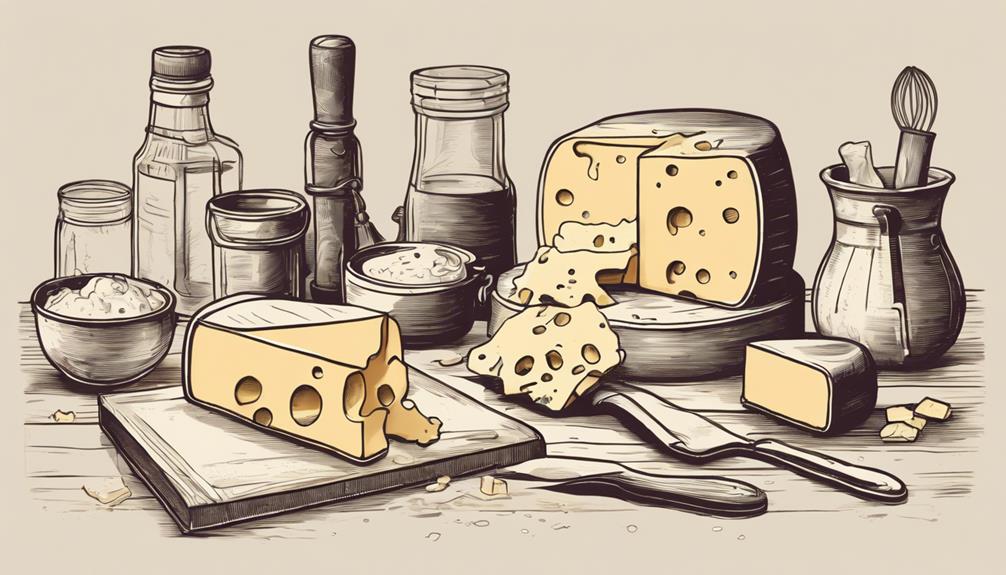How To Become More Self-Sufficient Without Starting a Full-Blown Farm…
Want to start preserving your harvest, making your own soap, or building a backyard root cellar — but not sure where to begin? “Homesteading Advice” gives you instant lifetime access to 35+ practical homesteading books on food preservation, veggie gardening, DIY natural cleaning products (save over $250 per year with this skill alone), brewing, off-grid energy, and a whole lot more…
Click Here To Check It Out Now!
“Hey there! I recently started making my own cheese, and it’s been an exciting journey so far. However, I’ve noticed that despite following the recipes closely, my cheese yield has been disappointingly low. For example, the last time I made cheddar, I expected around 2 lbs but ended up with only 1 lb. I’ve been using fresh whole milk from a local dairy farm, so I’m puzzled. What could be causing the low yield? Any tips to improve my results would be greatly appreciated.” Thanks, Bruce, Denver, USA.
Why Did My Cheese Have A Poor Yield?
Hi Bruce! It’s fantastic that you’re diving into the world of cheese making. It’s a craft that’s as rewarding as it is challenging, and I totally understand how frustrating it can be when your efforts don’t produce the expected results. Don’t worry; let’s explore some common reasons why your cheese yield might be lower than anticipated and how to address them.
Quality of Milk
The quality of milk is perhaps the most significant factor affecting cheese yield. Even though you’re using fresh whole milk from a local dairy farm, there are several aspects to consider:
- Butterfat Content: The fat content in the milk can significantly impact the yield. Cheddar cheese, for example, benefits from a higher butterfat content. If the milk is too lean, you might not get as much cheese.
- Protein Levels: Milk proteins are essential for cheese formation. Variations in protein levels can affect the curd formation and final yield.
- Milk Freshness: While fresh milk is typically best, milk that’s too fresh (within hours of milking) can sometimes have variable protein structures. Allowing milk to chill for a day can sometimes yield better results.
Given you’re in Denver, Bruce, also consider the elevation. Higher altitudes can sometimes influence milk’s properties slightly, though this is rarely a primary cause.
Rennet and Coagulation
The type and amount of rennet you use plays a pivotal role in coagulation, which directly impacts your yield:
- Rennet Strength: Ensure you’re using the correct rennet strength. Too much or too little can affect curdling.
- Temperature: The milk should be at the right temperature for rennet to work effectively. Too hot or too cold, and the curd will be weak.
- Time: Allow sufficient time for the curd to form and stabilize. Rushing this step can lead to lower yields.
Acidity Levels
Acidity (pH levels) is another crucial factor in cheese making:
- Starter Culture: The type of bacteria used can influence acidity. Make sure you’re using the right culture for the cheese type.
- Acid Development: Monitor pH levels closely. The cheese might not ferment correctly if the acidity is off, leading to poor yield.
- Ripening Time: Allow sufficient time for the starter culture to acidify the milk properly.
Curd Cutting Methods
How you cut, cook, and handle the curd has a significant impact on the final yield:
- Cut Size: Make sure your curd pieces are consistent and appropriately sized. Too large, and whey expulsion will be inefficient; too small, and you may lose solids during the process.
- Gentle Handling: Handle curds gently to avoid losing milk solids into the whey.
Whey Management
Efficient whey expulsion is vital:
- Draining: Ensure the whey is thoroughly drained. Leftover whey can result in a wetter cheese, which could reduce your final yield weight.
- Pressing: Pressing must be done correctly; otherwise, excess whey might remain, reducing yield and affecting texture.
Sanitation and Hygiene
Cleanliness in cheese making cannot be overstated:
- Equipment Sterilization: Ensure all equipment is properly sterilized to avoid bacterial contamination, which could spoil batches and yield.
In short, every step from the selection of milk to the final pressing can impact how much cheese you end up with. Paying close attention to each stage will help you improve your yield.
Practical Tips for Improving Yield
Here are some actionable tips to help you boost your cheese yield, Bruce:
- Use High-Quality Milk: Opt for milk with a higher butterfat content. If possible, test your milk for fat and protein levels.
- Optimize Rennet Usage: Follow the manufacturer’s recommendations for rennet use closely and adjust based on your observations.
- Monitor Acidity: Use a pH meter or strips to ensure your milk is acidifying properly. Adjust starter culture amounts as needed.
- Careful Curd Cutting: Use a curd cutter or knife to ensure uniform pieces and gentle stirring to avoid breaking the curds.
- Effective Whey Expulsion: Consider investing in a proper cheese press to expel whey more efficiently.
- Consistent Conditions: Maintain consistent temperature and humidity conditions during cheese making and aging processes.
Additional Considerations
Sometimes, other less obvious factors might be at play:
- Ambient Conditions: Room temperature and humidity can affect the cheese making process. Try to maintain a stable environment.
- Recipe Adjustments: Make small tweaks to your recipe based on your observations. Document these changes and their outcomes for future reference.
- Consult Other Cheesemakers: Engage with local cheese makers or online communities. They might offer insights specific to your milk source or local conditions in Denver.
Final Thoughts…
Bruce, cheese making is as much an art as a science. Recognizing the factors that influence yield and tweaking your methods will give you better results over time. Don’t get discouraged by a few low-yield batches. Each attempt provides valuable lessons, and with dedication, your yields will surely improve. Thanks for reaching out with your question and keep on crafting that delicious cheese!

